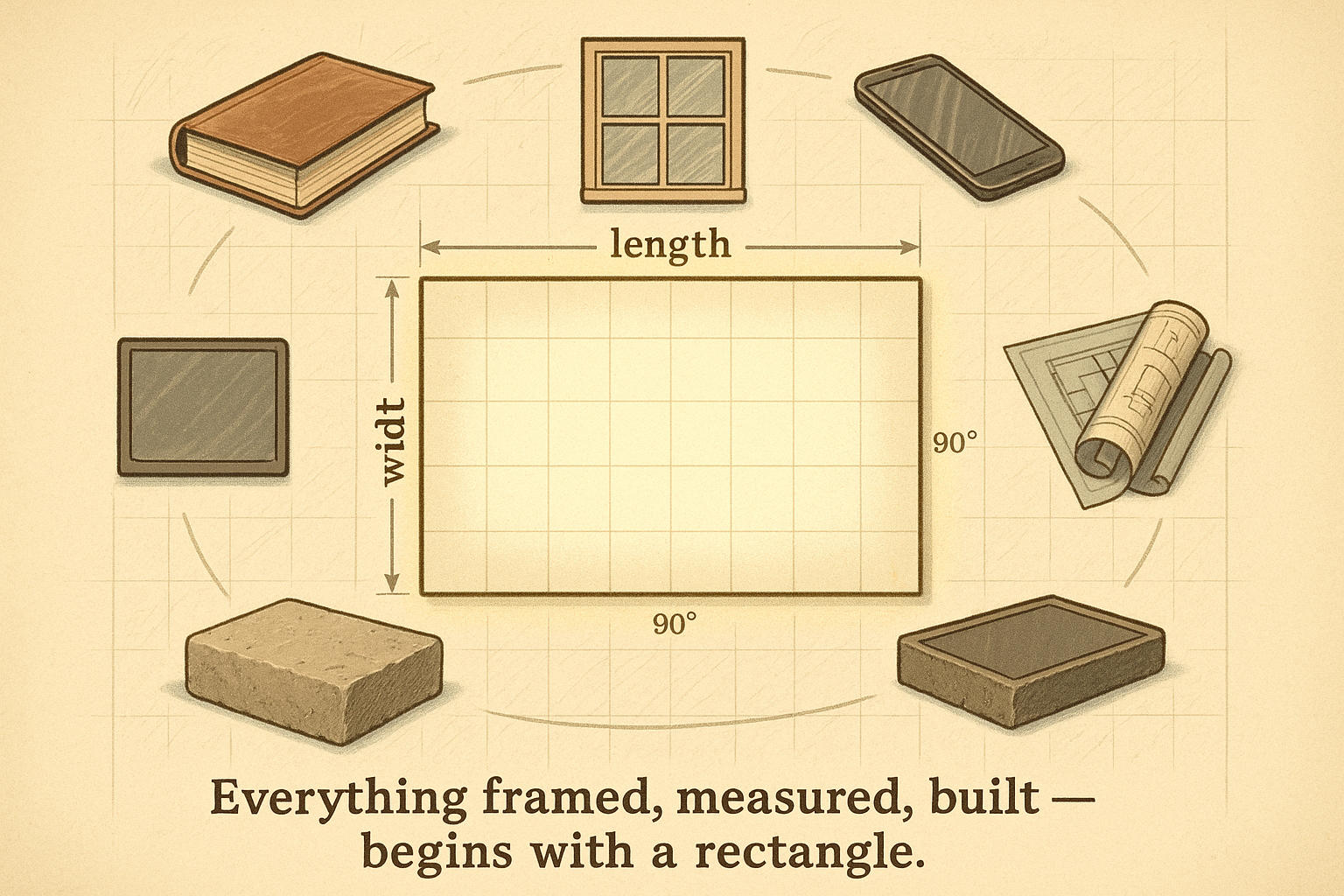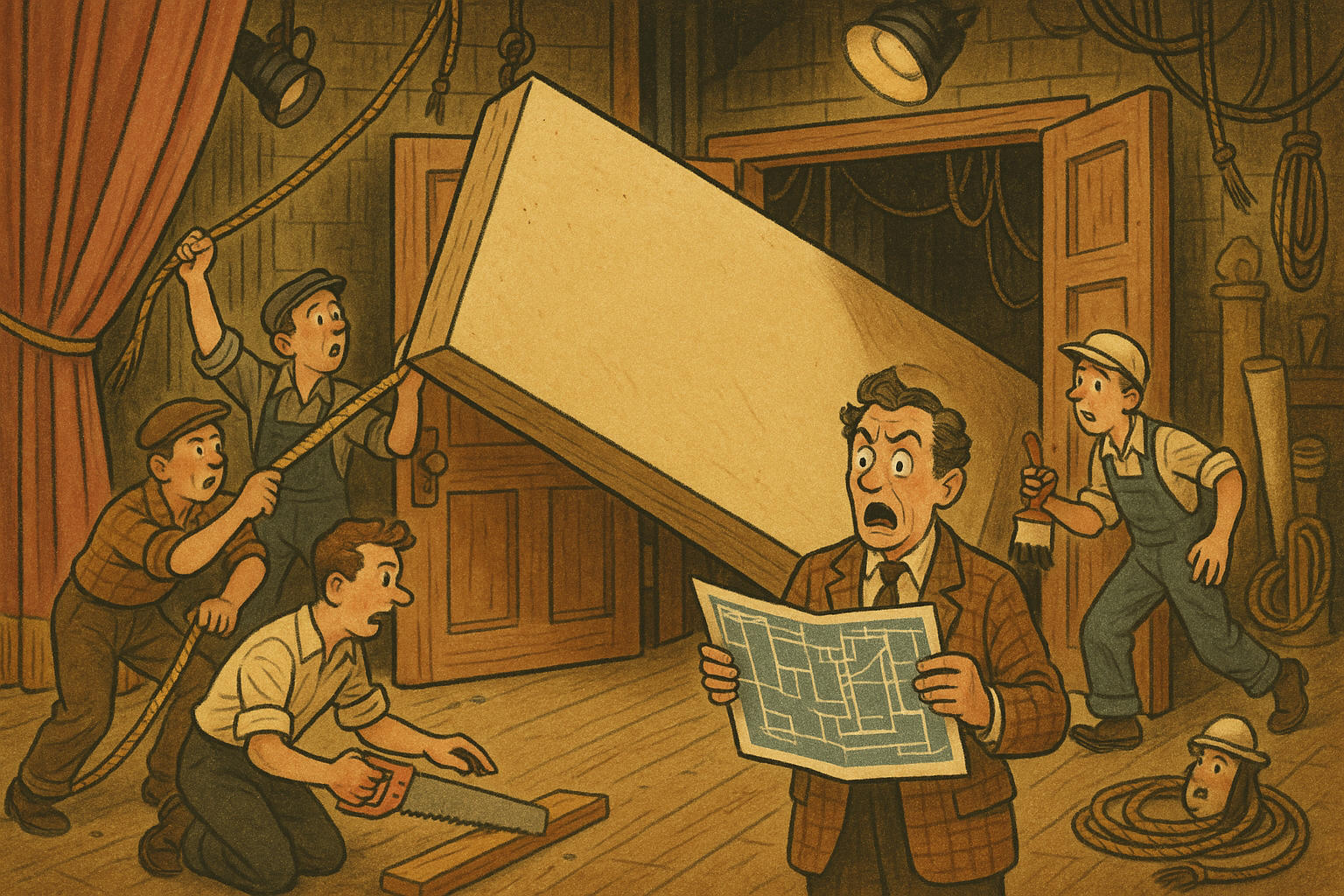The rectangle stands as one of the most recognizable shapes in both mathematics and everyday life. From garden layouts to architectural plans to classroom geometry problems, the ability to calculate the area of a rectangle accurately and efficiently is an essential skill. In this guide, we’ll explore how to use a Rectangle Area Calculator, while diving deeper into the formula’s meaning, real-life use cases, fascinating trivia, and even historical mishaps. By the end, you’ll gain not only practical confidence but also a richer understanding of geometry’s real-world reach.
Want to learn more about other shapes? Try our full collection of Area Calculators.
What is the Rectangle
When you think of a rectangle, everyday objects like books, windows, and smartphone screens likely come to mind. Rectangles are everywhere, so familiar that we often overlook how interesting they really are.
In geometry, a rectangle is classified as a quadrilateral, or four-sided polygon, where every angle is exactly 90 degrees. What sets rectangles apart is that their opposite sides are equal in length and run perfectly parallel. Imagine stretching a square in one direction — that elongated figure is a rectangle.
Rectangles have been used by civilizations for thousands of years. Ancient builders chose rectangular stones when constructing walls and temples, relying on the shape’s balance and stability. Today’s engineers and architects continue to prefer rectangles due to their symmetry, which simplifies calculations and supports strong design.
An easy way to think about a rectangle is by picturing a tiled floor — each tile represents a part of the whole. Visualizing a surface filled with identical square units gives insight into the key concept behind area measurement.
Despite their simplicity, rectangles play vital roles in diverse fields, from architecture and screen design to art, engineering, and physics. Understanding how rectangles work opens the door to seeing geometric patterns in both digital and physical environments
Curious how rectangles compare to other shapes? Try our Square Area Calculator to explore the area of perfect-sided figures, or the Parallelogram Area Calculator to dive into slanted quadrilaterals.

How to Calculate Rectangle Area?
One of the first geometry skills most people learn is how to calculate rectangle's area—and it’s a skill that sticks, because it’s so useful. Whether estimating flooring or measuring a wall for wallpaper, this basic calculation can save you time and effort.
The basic formula is:
Area = length x width
Where:
-
Length: the longer side of the rectangle
-
Width: the shorter side of the rectangle
-
Result: expressed in square units
(m², ft², in², etc.)
The specific steps:
Step 1: Measure the Length and Width
Use a ruler or measuring tape to find the rectangle’s two sides. Record both measurements carefully.
Example: A desk has a length of 5 feet and a width of 3 feet.
Step 2: Ensure Both Measurements Use the Same Units
Before calculating, check that both length and width are measured in the same unit.
-
1 meter = 100 centimeters -
1 foot = 12 inches
Need help converting units? Try our Area Calculator to ensure consistent measurements before you multiply.
Step 3: Apply the Formula
Multiply the length by the width.
Step 4: Report the Area in Square Units
Depending on your input units, your result should be in m², ft², in², etc.
Quick Tip: Always double-check your units—it’s a small detail that makes a big difference in getting the correct area.
Once you understand this process, you’ll be surprised how often this knowledge comes in handy — whether you're estimating floor space, designing packaging, or solving academic problems.
The Great Stage Disaster
Back in 1959, a Broadway production crew designed a rectangular stage platform meant to fit perfectly in a backstage area — it was supposed to be 30 feet long by 20 feet wide. But someone on the team misread the width measurement and used inches instead of feet.
The result? The platform ended up nearly two feet too wide.
During the final rehearsal, the crew tried to slide the platform into position — but it got jammed at the entrance, blocking performers and props. The result was backstage chaos just hours before opening night.
In a desperate rush, the crew had to saw off the excess, repaint, and reblock part of the show overnight.
Note: Always double-check your rectangle dimensions — and your units.

Check out Math section to solve math quickly and easily

